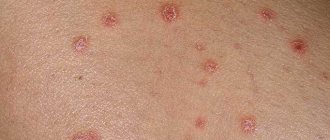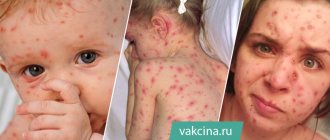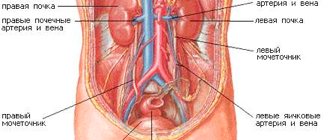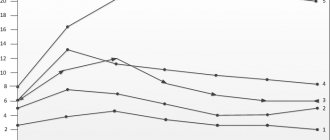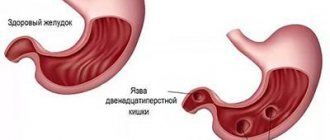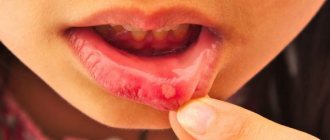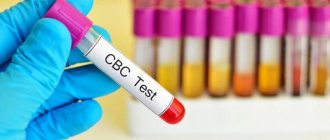About the disease
Another name for impetigo is superficial pyoderma, the frequency is about 15% of all skin diseases.
With proper treatment, no traces remain after recovery. Impetigo begins with the appearance of patchy redness (erythema) around the mouth and nose or on the extremities. Next, bubbles (vesicles) appear on the reddened skin, their contents are serous-purulent. After opening the bubbles, honey-yellow crusts form, which disappear after drying. The skin at the site of the crust remains pigmented for some time, but then this too goes away. Pain and itching are rare. Impetigo is caused by strepto- and staphylococci; the clinical manifestations of damage by these bacteria are somewhat different from each other. Streptococcal infection is typical for humid, warm areas and develops most often at the end of summer. There are no warning signs; bacteria multiply on initially healthy skin. Streptococcal bacterial carriage does not occur; the disease always develops.
Staphylococcal damage proceeds differently. Pathogenic bacteria remain on the skin for a long time in a dormant (latent) state. Therefore, the disease manifests itself either in the form of isolated cases, or reaches the frequency of an epidemiological outbreak (this is how neonatal pemphigus occurs). Epidemiological pemphigus occurs where there is crowding of people: in maternity hospitals, army barracks, boarding schools.
If Staphylococcus aureus is detected, the premises are closed and quarantine measures are carried out to stop the spread of infection. They treat both the sick person and everyone who came into contact with the patient.
In children, the dangerous age for infection is considered to be from 2 to 5 years. Contact sports and minor skin injuries increase the likelihood of the disease.
Impetigo is classified according to the type of pathogen:
- contagious (streptococcal);
- staphylococcal;
- mixed.
Within these large subgroups, several forms are distinguished. So, contagious impetigo has the following types:
- dry pyoderma, or lichen simplex - looks like pink spots on the face that immediately peel off, in their place the skin remains pigmented for a long time;
- bullous form - bullae (bubbles) up to 2 cm in diameter, filled with bloody-purulent contents, form on the limbs. The process affects the nails, after opening, rough (“greasy”) crusts form, the general condition suffers (body temperature rises, headache, other symptoms of intoxication occur);
- ring-shaped - first a bulla is formed, which opens in the center and begins to heal, and grows along the edges, and all together resembles a ring;
- jam (slit-like form) - occurs in those who often lick their lips, as well as on the wings of the nose and in the corners of the eyes. A crack forms at the site of the bubble, and the surrounding skin becomes inflamed. Heals poorly, lip and eye movements are interfered with;
- impetigo of the mucous membranes - blisters, followed by ulcers that appear in the mouth, on the tongue, inside the nasal passages, on the mucous membranes of the eyes;
- vegetative impetigo - blisters spread throughout the body;
- intertriginous streptoderma - blisters and erosions form in large natural skin folds, causing itching and pain;
- syphiloid-like form - found only in newborns, blisters form on the buttocks, subsequent erosions resemble chancre.
The most common form of staphylococcal impetigo is ostiofolliculitis, or inflammation of the mouths of the hair follicles.
It occurs when personal hygiene rules are not observed, especially in male adolescents. It occurs in the form of bullous (bubbles up to 5 cm) and non-bullous (up to 1.5 cm) varieties. A mixed form (vulgar or simple impetigo) develops when both types of bacteria are present on the skin. Itching and scratching are disturbing, rough thick crusts form, inflammation of the lymph nodes and symptoms of intoxication occur.
Thus, there are many clinical forms of impetigo. They have both common and distinctive symptoms. Therefore, if skin rashes appear, you should immediately consult a doctor. Making a diagnosis on your own is unrealistic and irrational. This only leads to delaying time and progression of the pathological process.
Impetigo: treatment
At the first signs of illness, you should consult a dermatologist.
To establish an accurate diagnosis, the doctor needs a complete clinical picture, as well as an examination of the contents of the pustular vesicle.
Treatment is carried out on an outpatient basis. Forecast: problem elimination in 7 – 14 days.
- The patient should have separate dishes, a towel, a brush, and a comb. You cannot have close contact with loved ones.
- Pustular rashes should not be wetted. Antibacterial treatment with an alcohol solution (camphor, salicylic) is required up to 4 times a day.
- The doctor opens large pustules and lubricates them with brilliant green.
- An ointment based on the antibiotic indicated for the identified type of pathogen is applied to the area treated with an antiseptic.
At the end of the course of treatment for impetigo, the patient receives recommendations on how to restore and strengthen damaged hair.
Symptoms of impetigo
Inflammation caused by streptococcus manifests itself as small red blisters (up to 5 mm) with purulent contents. At first, the blisters are painful, but then the pain goes away, the blisters collapse and open, forming crusts. The whole process takes up to 2 months. Such vesicles can appear in any area of the body; the provoking factor is poor hygiene. The danger is the penetration of streptococcus into the blood and lymph, and from there into various organs with the development of myocarditis, nephritis, tonsillitis, rheumatism and even sepsis. Often, after streptococcal impetigo, panaritium develops - inflammation of the peri- and subungual bed. Staphylococcal impetigo is often localized around the hair follicles. Inflammation spreads deeper, causing the formation of ulcers, boils and even carbuncles. A lot of ulcers form at once; they cover almost all healthy skin. The lymph nodes react, become denser and hurt. Any type of impetigo is highly contagious.
General notes on therapy
- For superficial forms of pyoderma, the use of topical antiseptics, aniline dyes, and external antibacterial drugs is recommended.
- Systemic antibacterial agents are prescribed for widespread, deep, chronic, recurrent pyoderma, in the absence of effect from external therapy, the presence of general phenomena (fever, malaise) and regional complications (lymphadenitis, lymphangitis), localization of deep pyoderma on the face.
- Glucocorticosteroids for systemic use are prescribed for high activity of the pathological process, for chronic ulcerative-vegetative and gangrenous pyoderma.
- Systemic retinoids are prescribed for keloid acne, abscess folliculitis and scalp perifolliculitis.
- Immunobiological agents are prescribed in cases of recurrent, persistent forms of pyoderma.
- The regimen of a patient with pyoderma involves rational skin care both in the lesion and outside it. In case of a disseminated process, frequent water procedures and hair removal by shaving are not recommended. It is recommended to cut the hair in the area where pyodermic elements are located.
- In case of long-term infectious and inflammatory processes, as well as in case of multiple rashes, certain attention should be paid to diet: nutrition should be complete, rich in vitamins, the amount of salt and carbohydrates is sharply limited, and alcohol is completely excluded.
indications for hospitalization
- diseases associated with the action of toxin-produced strains of staphylococcus and streptococcus;
- widespread rashes accompanied by a violation of the general condition.
requirements for treatment results
- resolution of pathological skin elements;
- epithelization, scarring of ulcers;
- reducing the frequency of disease relapses in chronic forms of pyoderma.
prevention
- Primary prevention of pyoderma consists of timely antiseptic treatment of microtraumas, cracks, and wound surfaces. It is necessary to treat identified common diseases against which pustular skin lesions may develop (diabetes mellitus, diseases of the digestive tract, respiratory system, etc.).
- Secondary prevention of pyoderma includes periodic medical examinations and, if necessary, anti-relapse therapy (general UV irradiation, skin care, sanitation of focal infection).
External therapy
1. Antiseptic preparations for external use:
- solution of brilliant green, alcohol 1% externally to the area of rash 2-3 times a day for 7-14 days, or
- fucorcin, alcohol solution applied externally to the area of rash 2-3 times a day for 7-14 days, or
- methylene blue, aqueous solution 1% externally to the area of rash 2-3 times a day for 7-14 days, or
- potassium permanganate, aqueous solution 0.01-0.1% externally to the area of rash 2-3 times a day for 7-14 days, or
- hydrogen peroxide solution 1-3% externally on the rash area 2-3 times a day for 7-14 days, or
- chlorhexidine, alcohol solution 0.5%, aqueous solution 0.05-1% externally to the area of rash 2-3 times a day for 7-14 days, or
- povidone-iodine, 10% solution applied externally to the area of the rash 2-3 times a day for 7-14 days.
2. Antibacterial drugs for external use:
- neomycin sulfate (5000 IU/5 mg) + bacitracin zinc (250 IU) externally to the area of rash 2-3 times a day for 7-14 days, or
- gentamicin sulfate, ointment or cream 0.1% (d) externally to the area of rash 3-4 times a day for 7-14 days, or
- fusidic acid, cream or ointment 2% externally to the area of rash 3-4 times a day for 7-14 days, or
- mupirocin, 2% ointment applied topically to the area of rash 2-3 times a day for 7-14 days, or
- erythromycin, ointment (10,000 units/g) externally to the area of rash 2-3 times a day for 7-14 days, or
- lincomycin hydrochloride, 2% ointment applied externally to the area of rash 2-3 times a day for 7-14 days, or
- silver sulfathiazole, 1% cream applied externally to the area of rash 1-2 times a day for 7-10 days for 7-14 days.
3. Glucocorticosteroid topical agents combined with antibacterial drugs:
Prescribed in the case of an acute inflammatory process accompanied by erythema, swelling, itching, and more often in the presence of itchy dermatoses complicated by secondary pyoderma:
- tetracycline hydrochloride + triamcinolone acetonide, aerosol applied externally to the area of rash 2-4 times a day for 5-10 days, or
- hydrocortisone acetate + oxytetracycline hydrochloride, ointment, aerosol applied externally to the area of the rash 1-3 times a day for 5-10 days, or
- fusidic acid + betamethasone, cream applied externally to the rash area 2-3 times a day for 7-14 days, or
- fusidic acid + hydrocortisone, cream applied externally to the rash area 3 times a day for 7-14 days, or
- betamethasone valerate + gentamicin sulfate, cream, ointment (B) externally to the area of rash 1-2 times a day for 7-14 days;
- betamethasone dipropionate + gentamicin sulfate, cream, ointment (B) externally to the area of the rash 2 times a day for 7-14 days.
Systemic therapy
1. Antibacterial drugs of the penicillin group:
- benzylpenicillin sodium salt: children - 25,000-50,000 units per kg of body weight per day intramuscularly, adults - 2,000,000-12,000,000 units per day intramuscularly. The drug is administered every 4-6 hours for 7-10 days, or
- amoxicillin trihydrate: children under 2 years of age - 20 mg per kg of body weight per day orally, children aged 2 to 5 years - 125 mg 3 times a day orally, children aged 5 to 10 years - 250 mg 3 times per day orally, for children over 10 years of age and adults - 500 mg 3 times a day orally. The course of treatment is 7-10 days, or
- amoxicillin: children under 3 years of age - 30 mg per kg of body weight per day in 2-3 doses orally, children aged 3 to 10 years - 375 mg 2 times a day orally, children over 10 years of age and adults -500 -750 mg 2 times a day orally. The course of treatment is 7-10 days, or
- amoxicillin trihydrate + clavulanic acid: children aged 3 months to 1 year - 2.5 ml of suspension 3 times a day orally, children aged 1 to 7 years - 5 ml of suspension 3 times a day orally, children aged from 7 to 14 years old - 10 ml of suspension or 5 ml of suspension forte 3 times a day orally, children over 14 years of age and adults - 1 tablet (250 + 125 mg) 3 times a day or 1 tablet (500 + 125 mg) ) 2 times a day orally. The course of treatment is 7-10 days.
2. Antibacterial drugs of the cephalosporin group:
- cephalexin: children weighing less than 40 kg - 25-50 mg per kg body weight per day orally, adults and children over 10 years of age - 250 - 500 mg orally 4 times a day. The course of treatment is 7-14 days, or
- cefazolin: children - 20-40 mg per kg of body weight per day intramuscularly or intravenously, adults - 1 g per day intramuscularly or intravenously. The frequency of administration is 2-4 times a day. The course of treatment is 7-10 days, or
- cefaclor: children under 6 years of age - 30 mg per kg of body weight per day orally in 3 divided doses, children aged 6 to 10 years - 250 mg orally 3 times a day, children over 10 years of age and adults - 500 mg orally 3 times a day. The course of treatment is 7-10 days, or
- cefuroxime: children - 125-250 mg orally 2 times a day, adults - 250-500 mg orally 2 times a day. For parenteral administration: children under 3 months of age - 30 mg per kg of body weight (daily dose) 2-3 times a day, children over 3 months of age - 60 mg per kg of body weight (daily dose) 3-4 times a day , adults - 750 mg-1.5 g 3 times a day. The course of treatment is 7-10 days, or
- cefotaxime: children weighing less than 50 kg - 50-100 mg per kg body weight per day intravenously or intramuscularly with an administration interval of 6-8 hours, children weighing more than 50 kg and adults - 2.0-6.0 g per day day intravenously or intramuscularly with an administration interval of 8-12 hours. The course of treatment is 5-10 days, or
- Ceftriaxone: children under 12 years of age - 50-75 mg per kg of body weight 1 time per day intramuscularly, children over 12 years of age and adults - 1.0-2.0 g 1 time per day intramuscularly. The course of treatment is 7-10 days.
3. Antibacterial drugs of the macrolide group:
- erythromycin: children under 3 months of age - 20-40 mg per kg of body weight per day, children aged from 3 months to 18 years - 30-50 mg per kg of body weight per day, adults - 1.0-4.0 g orally per day in 4 doses. The course of treatment is 5-14 days, or
- azithromycin: children - 10 mg per kg body weight 1 time per day orally for 3 days, adults - 500 mg orally 1 time per day for 3 days, or
- Clarithromycin: children - 7.5 mg per kg body weight per day orally, adults - 500-1000 mg per day orally. The frequency of administration is 2 times a day. The course of treatment is 7-10 days.
4. Antibacterial drugs of the tetracycline group:
doxycycline: for children over 12 years of age and/or with body weight less than 50 kg - 4 mg per kg of body weight once a day on the 1st day, 2 mg per kg of body weight once a day on subsequent days; children over 12 years of age and/or weighing more than 50 kg and adults - 100 mg orally 2 times a day for 10-14 days.
5. Antibacterial drugs of the fluoroquinolone group:
- ciprofloxacin 250-500 mg 2 times a day orally for 5-15 days, or
- Levofloxacin: 250-500 mg orally 1-2 times a day for 7-14 days, or
- ofloxacin: 200-400 mg orally 2 times a day for 7-10 days.
6. Antibacterial drugs of the lincosamide group:
clindamycin: children - 3-6 mg per kg body weight orally 4 times a day, adults 150-450 mg orally 4 times a day; when administered parenterally to children, 15-40 mg per kg of body weight per day, to adults - 600 mg-2.7 g per day, frequency of administration 3-4 times per day. The course of treatment is 10 days.
7. Antibacterial sulfonamide drugs:
sulfamethoxazole + trimethoprim: children aged 3 to 5 years - 240 mg orally 2 times a day; children aged 6 to 12 years - 480 mg orally 2 times a day; adults and children over 12 years of age -960 mg orally 2 times a day. The course of treatment is from 5 to 14 days.
8. Glucocorticosteroid drugs for systemic use (for ulcerative, ulcerative-vegetative pyoderma):
- prednisolone 25-30 mg per day intramuscularly for 5-7 days with a gradual dose reduction until discontinuation, or
- dexamethasone phosphate 4 mg (1 ml) 4-6 mg per day intramuscularly for 5-7 days with a gradual dose reduction until discontinuation, or
- betamethasone disodium phosphate + betamethasone dipropionate 1-2 ml intramuscularly once, if necessary, repeat the administration after 10 days.
9. Systemic retinoids: isotretinoin 0.5-1.0 mg per kg body weight per day orally for 3-4 months.
10. Immunobiological agents:
- purified liquid staphylococcal toxoid in 1 ml 12 ± 2 EU of staphylococcal toxoid: in increasing doses: 0.1,0.3,0.5,0.7,0.9,1.2 and 1.5 ml subcutaneously with an interval of 2 days; per course of treatment - 7 injections. The drug is not used simultaneously with treatment with serum antistaphylococcal drugs (immunoglobulin plasma) or
- staphylococcal medicinal liquid vaccine (staphylococcal antifagin), 1 ml: children aged 6 months to 7 years - 0.1 ml subcutaneously daily; for children over 7 years of age, the initial dose is 0.2 ml subcutaneously, then increase the dose by 0.1 ml daily for 8 days. Repeated course of treatment after 10-15 days in case of extensive skin lesions with relapses, or
- human antistaphylococcal immunoglobulin liquid, 100 IU: for mild forms of pyoderma 100 IU per day intramuscularly, for generalized infection 5 IU per kg of body weight per day intramuscularly, course of treatment - 3-5 injections daily or every other day.
In the treatment of diseases of staphylococcal etiology, accompanied by bacteremia and sepsis, the following is used:
- human anti-staphylococcal immunoglobulin for intravenous administration, 10.25 and 50 ml in bottles, in 1 ml at least 20 IU: for children -5-7 IU per kg of body weight, no more than 25 IU (single dose) intravenously drip at a rate of 8-10 drops per 1 min. The course consists of 10 infusions, which are carried out every 24-72 hours. Adults - 5-7 IU per kg of body weight (single dose) intravenously at a rate of no more than 40 drops per minute. The course consists of 10 infusions, which are carried out every 24-72 hours. The drug is compatible with other drugs or
- - normal human immunoglobulin for intravenous administration, 10, 25 and 50 ml in vials. Children: 3-4 ml per kg of body weight, no more than 25 IU (single dose) intravenously at a rate of 8-10 drops per minute for 3-5 days. Adults: 25-50 ml intravenously at a rate of no more than 40 drops per minute every 1-3 days, the course of treatment is 3-10 infusions. The drug is compatible with other drugs.
Non-drug therapy
UHF therapy - used for deep forms of pyoderma. The course of treatment is 5-10 procedures.
Causes of impetigo
Pathogenic bacteria are everywhere; you can completely get rid of pathogens only through special treatment (sterilization), and then only for a short time.
Even with daily hygiene procedures, transient flora and permanently resident bacteria are always present on the skin and do not cause infection. Under the slightest unfavorable conditions - prolonged wetness, untimely bathing, disruption of the sebaceous glands, scratches - bacteria instantly penetrate the dermis. The dermis immediately reacts to the invasion and inflammation develops. Various substances are released into the skin to destroy bacteria and restore integrity. The process ultimately ends with the cessation of inflammation and the formation of a scar, which gradually resolves.
Diagnosis of impetigo
The dermatologist makes a preliminary conclusion when examining the patient, taking into account the clinical picture of the disease. To determine the pathogen, smear microscopy and bacteriological culture of the discharge from the vesicles are performed.
Additionally, dermatoscopy and a clinical blood test are prescribed.
Differential diagnosis of impetigo is carried out with herpes simplex, dyshidrosis, candidiasis, chickenpox, herpes simplex, dermatophytosis, contact dermatitis, pemphigus vulgaris, dermatitis herpetiformis, bullous scabies, erysipelas.
Prevention of impetigo
The main prevention is good personal hygiene, frequent change of bed and underwear, individual sets in common areas (swimming pools, baths, trains). Children need to be taught hygiene skills as early as possible. Washing your hands after returning from a walk can prevent many skin diseases. Doctors at the SM-Doctor clinic are ready to help every child when the first signs of skin damage appear. At the first appointment, an individual treatment and prevention plan is developed so that the baby’s skin remains under the best protection for life. Contact qualified dermatologists at SM-Doctor!
Impetigo
Impetigo is a bacterial disease of the superficial layers of the skin, manifested by specific vesiculopustular rashes.
As it progresses, it can cause serious complications and therefore requires prompt treatment. This is a contagious disease transmitted through household contact. Impetigo is most often diagnosed in children. Children are constantly in close contact with each other, attending educational institutions, playing on playgrounds, etc., regularly exchanging toys and things - this contributes to the spread of infection. In addition, the children's body resists infections worse than the body of adults.
Frequently asked questions about impetigo
How does impetigo manifest?
First, red spotty-tubercular rashes appear on the body, which soon turn into bubbles filled with cloudy liquid (the so-called phlyctenes). They are located scattered on different parts of the body or in groups. After opening, they are covered with a yellowish or golden crust. This symptom is specific to impetigo. To confirm the diagnosis, the doctor performs a bacteriological culture.
Why is impetigo dangerous?
Mild forms of the disease often resolve on their own - the blisters burst, become covered with a crust, which soon disappears. There are no scars left on the skin. But in severe cases of the disease, especially if it is caused by staphylococci, there is a risk of developing an abscess, phlegmon, and sepsis. In rare cases, complications from the kidneys and heart occur against the background of systemic infection.
How does impetigo appear in children?
The disease is transmitted through household contact from an infected person. Children actively communicate with each other, so they are more susceptible to infection.
